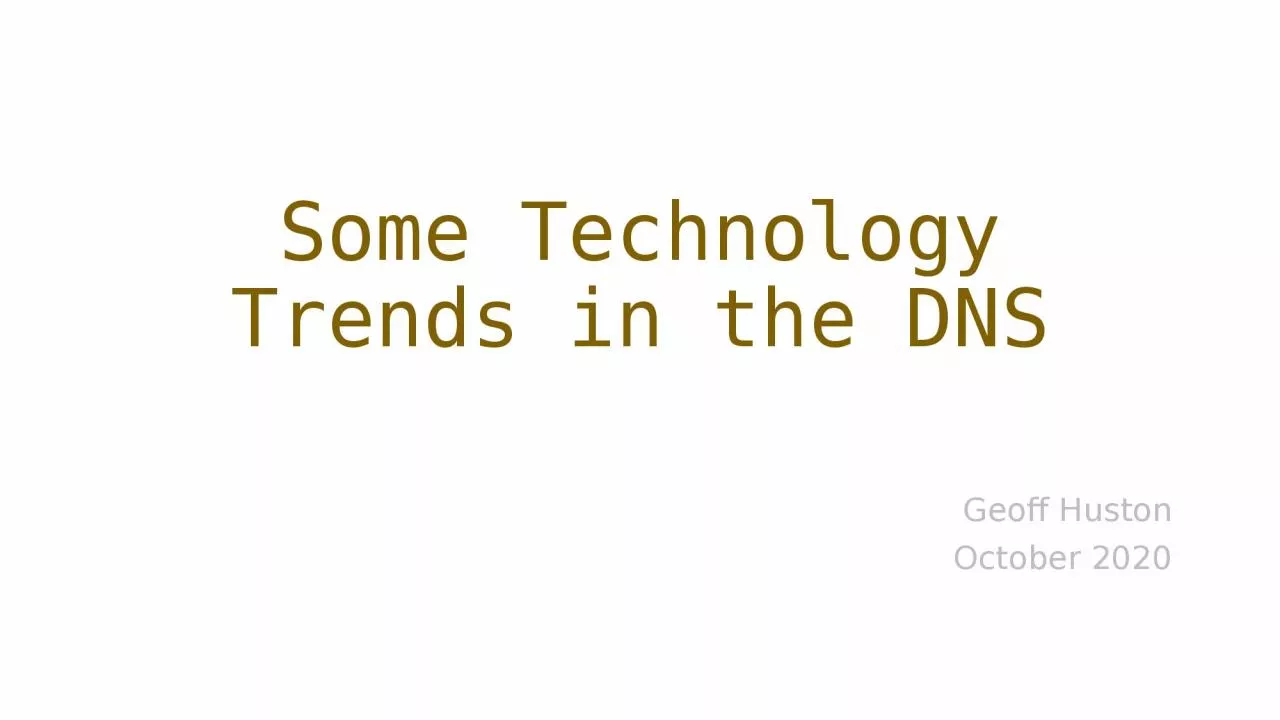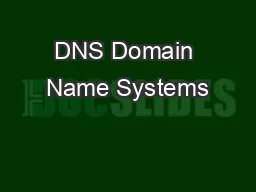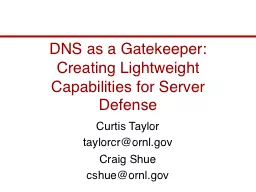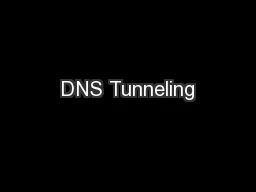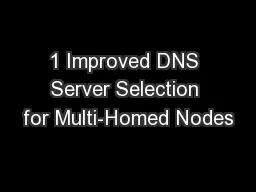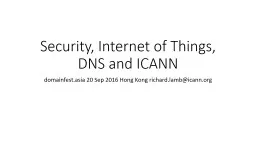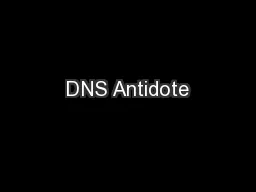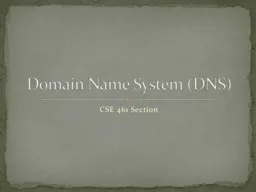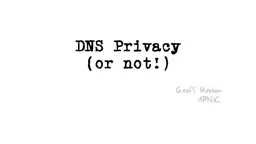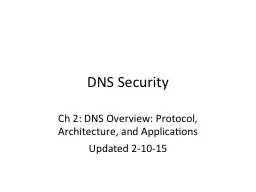PPT-Some Technology Trends in the DNS
Author : SportyChick | Published Date : 2022-08-01
Geoff Huston October 2020 Three broad topics DNSSEC DNS Privacy Other Stuff 1 DNSSEC Why How can you believe what the DNS tells you You cant DNS interception and
Presentation Embed Code
Download Presentation
Download Presentation The PPT/PDF document "Some Technology Trends in the DNS" is the property of its rightful owner. Permission is granted to download and print the materials on this website for personal, non-commercial use only, and to display it on your personal computer provided you do not modify the materials and that you retain all copyright notices contained in the materials. By downloading content from our website, you accept the terms of this agreement.
Some Technology Trends in the DNS: Transcript
Download Rules Of Document
"Some Technology Trends in the DNS"The content belongs to its owner. You may download and print it for personal use, without modification, and keep all copyright notices. By downloading, you agree to these terms.
Related Documents

